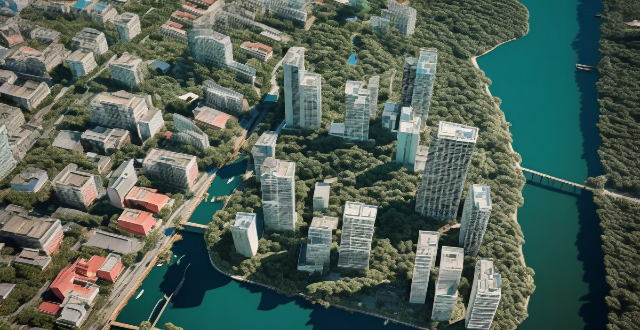Climate adaptation strategies differ between rural and urban areas due to infrastructure, resources, community needs, and environmental impacts. Urban areas often have advanced technology and diverse stakeholders involved in adaptation planning, while rural areas rely more on local knowledge and community-based initiatives. Funding and resources are also key factors, with urban areas having better access to funding for large-scale projects and a diversified economy to support climate adaptation measures. In contrast, rural areas may have limited financial resources and dependence on agriculture, making them vulnerable to climate impacts. Community participation is crucial in both settings, but urban areas may have more platforms for participatory planning and decision-making processes, while rural areas benefit from strong community cohesion and collective action. Environmental impact considerations also vary, with urban areas facing challenges like the heat island effect and air pollution, while rural areas focus on natural resource management and watershed protection.

How Do Climate Adaptation Strategies Differ Between Rural and Urban Areas?
Climate adaptation strategies are essential for both rural and urban areas, but the approaches can vary significantly due to the differences in infrastructure, resources, and community needs. Here's a detailed comparison:
Infrastructure and Technology
Urban Areas
- Advanced Infrastructure: Urban areas often have more advanced infrastructure, allowing for technologies like smart grids and green buildings to be implemented.
- Transportation Systems: Public transportation and electric vehicles can reduce carbon emissions and adapt to changing climates.
- Digital Technologies: Use of digital tools for monitoring, prediction, and response to climate events is more prevalent in urban settings.
Rural Areas
- Basic Infrastructure: Rural areas may lack the infrastructure needed for high-tech adaptation solutions.
- Agricultural Focus: Adaptation strategies often focus on improving agricultural practices, such as irrigation systems and crop diversification.
- Limited Digital Access: Limited access to digital technologies can hinder early warning systems and information dissemination.
Resources and Funding
Urban Areas
- Access to Funding: Urban areas typically have better access to government and private sector funding for climate adaptation projects.
- Research and Development: Universities and research institutions in cities can drive innovation in climate adaptation strategies.
- Diversified Economy: A diversified economy allows for investments in multiple sectors that can benefit from climate adaptation measures.
Rural Areas
- Limited Funds: Rural areas often have limited financial resources for large-scale adaptation efforts.
- Dependence on Agriculture: The economy is often heavily dependent on agriculture, which makes it vulnerable to climate impacts.
- Community-Based Approaches: Small-scale, community-driven projects are more common due to the lack of extensive funding.
Community Needs and Participation
Urban Areas
- Diverse Stakeholders: Multiple stakeholders, including businesses, NGOs, and city governments, are involved in urban adaptation planning.
- Public Awareness Campaigns: Cities can launch public awareness campaigns to educate residents about climate change and adaptation strategies.
- Participatory Planning: Urban communities often have platforms for participatory planning and decision-making processes.
Rural Areas
- Local Knowledge: Local knowledge and traditions play a significant role in shaping adaptation strategies.
- Capacity Building: There is a greater need for capacity building among rural communities to understand and implement adaptation measures.
- Community Cohesion: Strong community cohesion can lead to effective collective action for climate adaptation.
Environmental Impact
Urban Areas
- Heat Island Effect: Urban areas face challenges from the heat island effect, necessitating green spaces and cool roofing materials.
- Air Pollution: Strategies must address air pollution issues exacerbated by climate change.
- Waste Management: Waste management systems need to adapt to changing precipitation patterns and increased temperatures.
Rural Areas
- Natural Resource Management: Conservation and sustainable use of natural resources are crucial for rural adaptation.
- Water Management: Watershed management and protection against drought or floods are vital considerations.
- Soil Conservation: Soil conservation practices help maintain agricultural productivity in the face of climate variability.
In conclusion, while both rural and urban areas require tailored climate adaptation strategies, their approaches differ based on infrastructure, resources, community needs, and environmental impacts. Urban areas tend to leverage technology and diverse stakeholders, while rural areas rely more on local knowledge and community-based initiatives.